 Copyright © Michael Richmond.
This work is licensed under a Creative Commons License.
Copyright © Michael Richmond.
This work is licensed under a Creative Commons License.
Magnetic Fields and Currents
This lecture is based on HRW, Sections 29.7-29.9.
It covers the effect of magnetic fields on currents running through wires.
- A magnetic field exerts on a force on a wire (or other conductor)
when a current passes through it.
- The general formula for determining the size and direction of the
magnetic force on a current-carrying wire involves a complicated
integral
- There are several cases in which the solution is relatively easy:
(note that each one involves a cross product of two vectors)
- Straight wire in uniform magnetic field:
F = I (L x B)
- Curved wire in uniform magnetic field:
F = I (L' x B)
where L' is a straight vector from the starting point of the
wire to its end point
- Closed circuit loop in a magnetic field:
F = 0
- Although the force on a closed loop of current in a uniform magnetic
field is zero, the torque is not.
- If one defines a special "area vector" A, the magnitude of
which is the area of the closed loop, and the direction of which
is perpendicular to the plane of the loop (as given by right-hand
rule), then the torque on the loop is
tau = I (A x B)
- The torque acts to make the "area vector" parallel to the
direction of the magnetic field
- The magnetic moment "mu" of a closed circuit loop is a vector
quantity, the product of its current and "area vector".
One can express the torque on a loop as
tau = mu x B
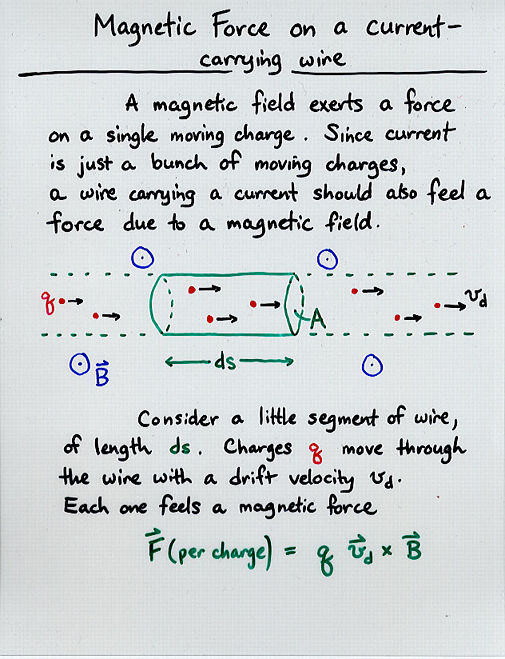 Viewgraph 1
Viewgraph 1
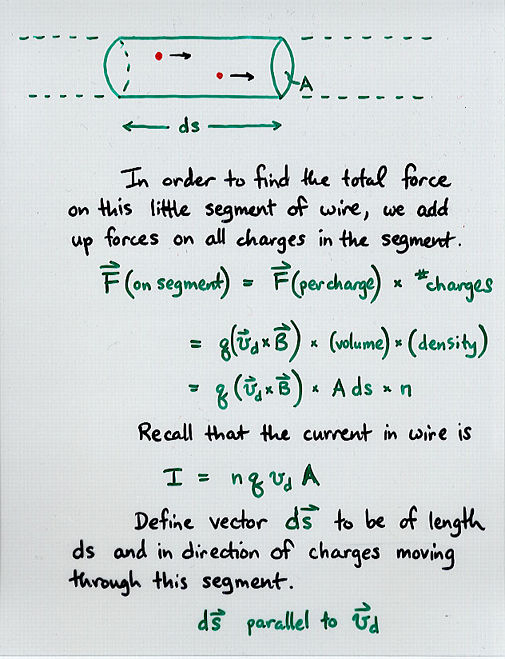 Viewgraph 2
Viewgraph 2
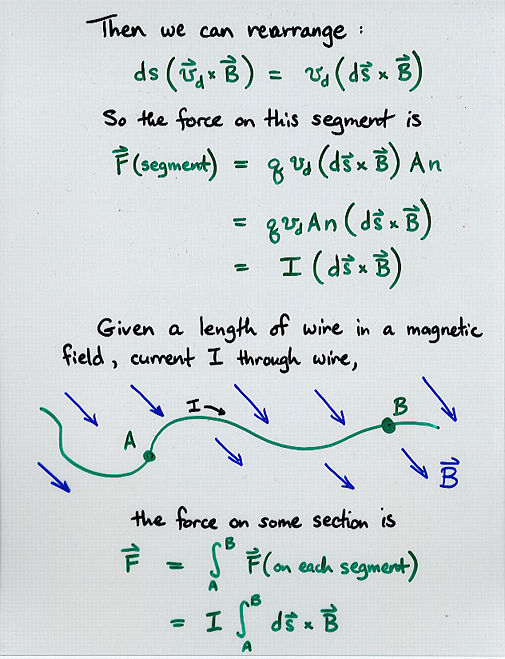 Viewgraph 3
Viewgraph 3
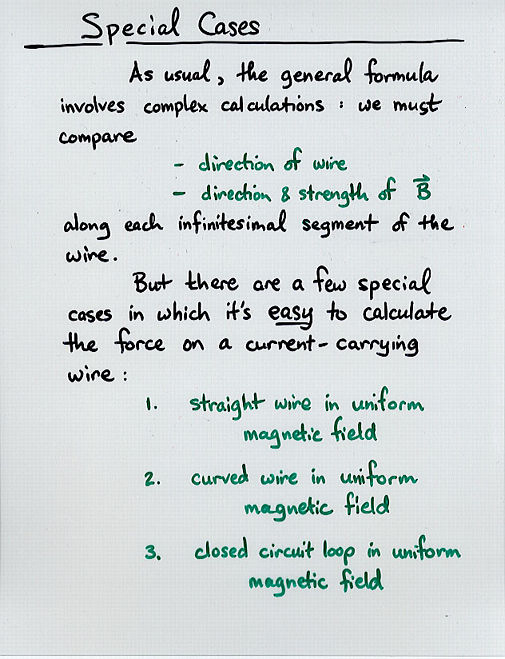 Viewgraph 4
Viewgraph 4
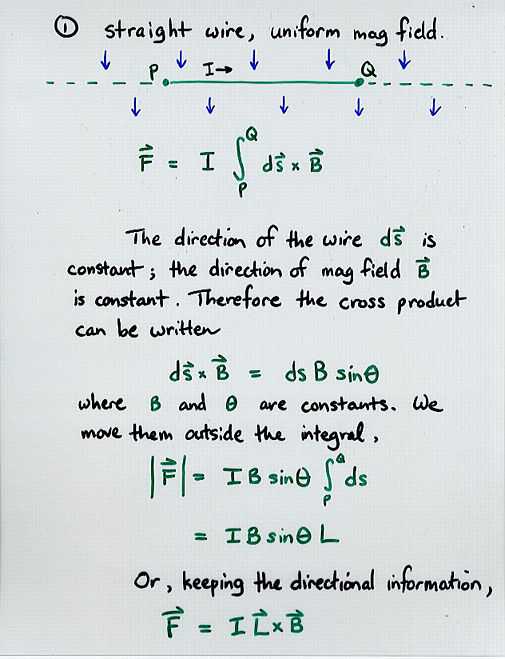 Viewgraph 5
Viewgraph 5
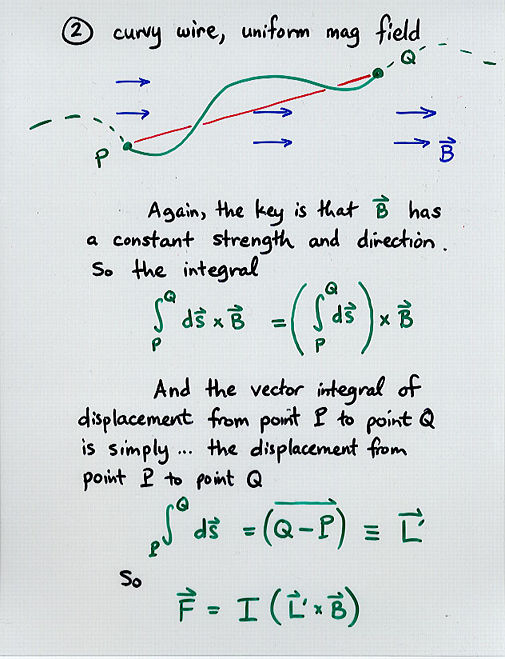 Viewgraph 6
Viewgraph 6
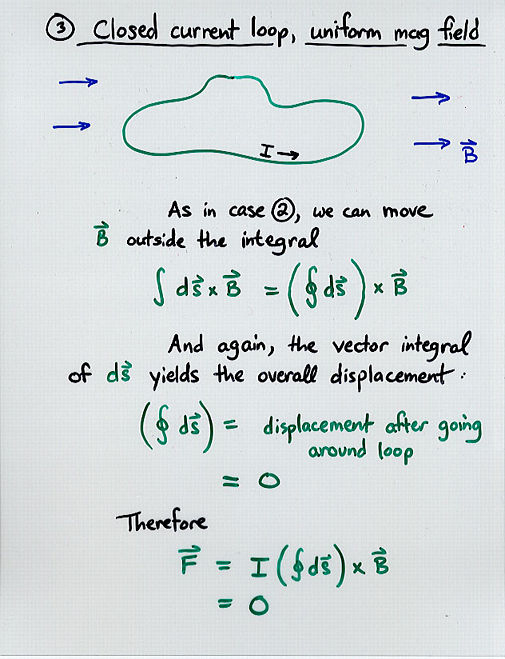 Viewgraph 7
Viewgraph 7
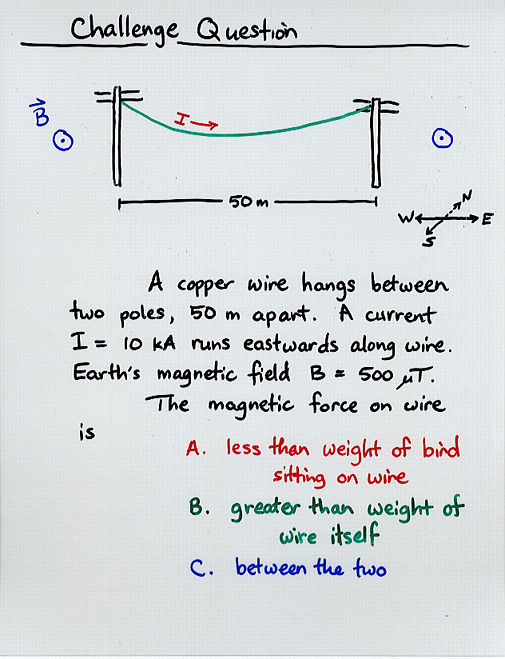 Viewgraph 8
Viewgraph 8
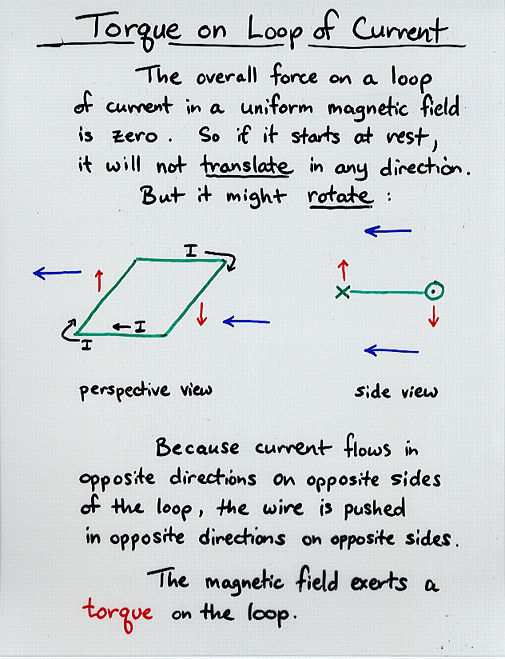 Viewgraph 9
Viewgraph 9
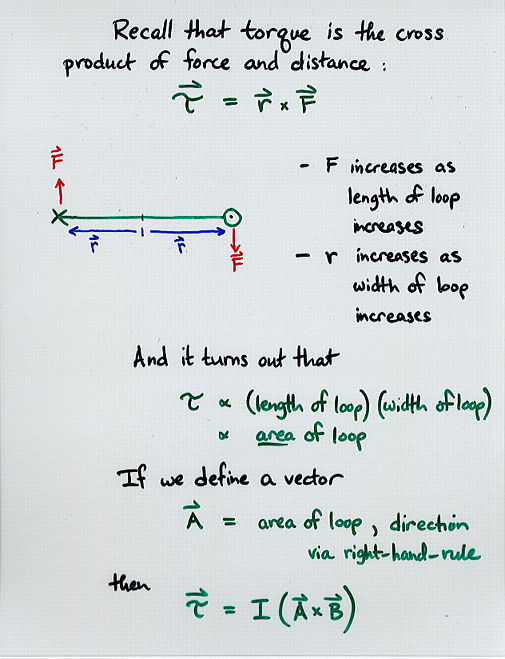 Viewgraph 10
Viewgraph 10
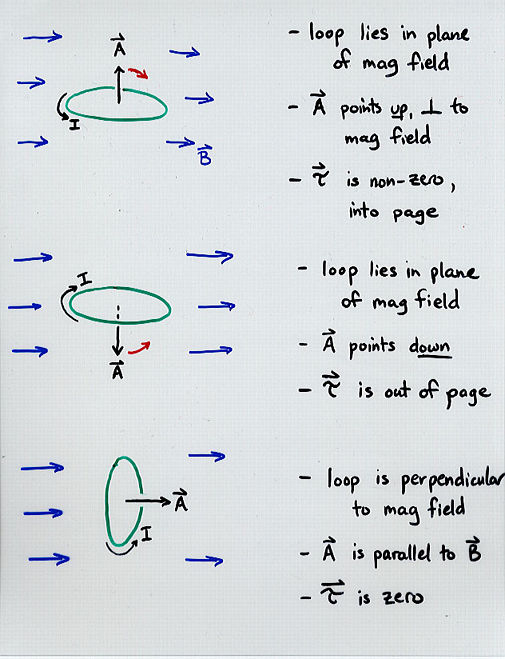 Viewgraph 11
Viewgraph 11
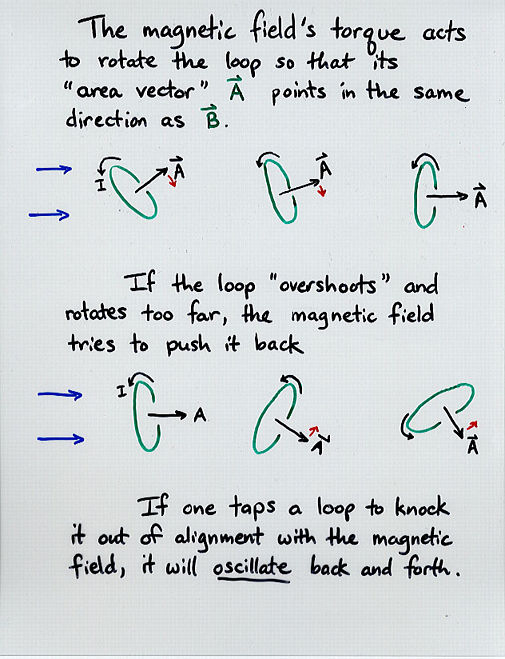 Viewgraph 12
Viewgraph 12
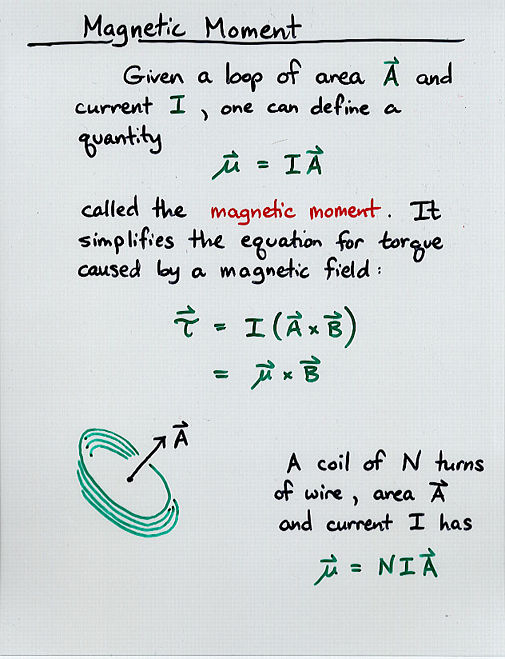 Viewgraph 13
Viewgraph 13
 Copyright © Michael Richmond.
This work is licensed under a Creative Commons License.
Copyright © Michael Richmond.
This work is licensed under a Creative Commons License.
 Viewgraph 1
Viewgraph 1 Copyright © Michael Richmond.
This work is licensed under a Creative Commons License.
Copyright © Michael Richmond.
This work is licensed under a Creative Commons License.
 Viewgraph 1
Viewgraph 1 Viewgraph 2
Viewgraph 2 Viewgraph 3
Viewgraph 3 Viewgraph 4
Viewgraph 4 Viewgraph 5
Viewgraph 5 Viewgraph 6
Viewgraph 6 Viewgraph 7
Viewgraph 7 Viewgraph 8
Viewgraph 8 Viewgraph 9
Viewgraph 9 Viewgraph 10
Viewgraph 10 Viewgraph 11
Viewgraph 11 Viewgraph 12
Viewgraph 12 Viewgraph 13
Viewgraph 13 Copyright © Michael Richmond.
This work is licensed under a Creative Commons License.
Copyright © Michael Richmond.
This work is licensed under a Creative Commons License.